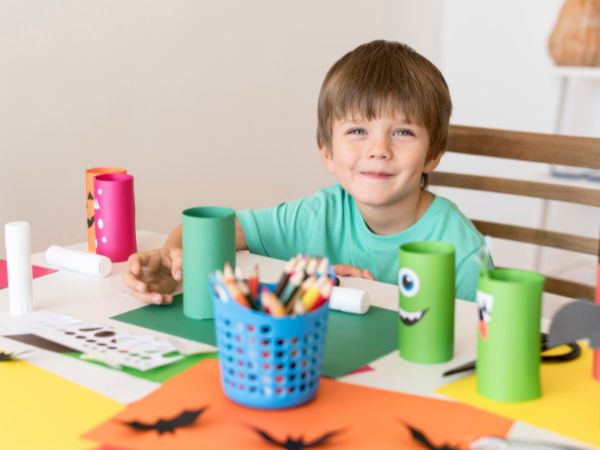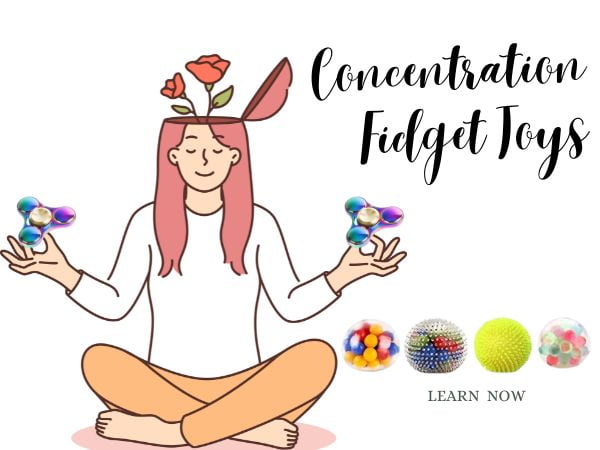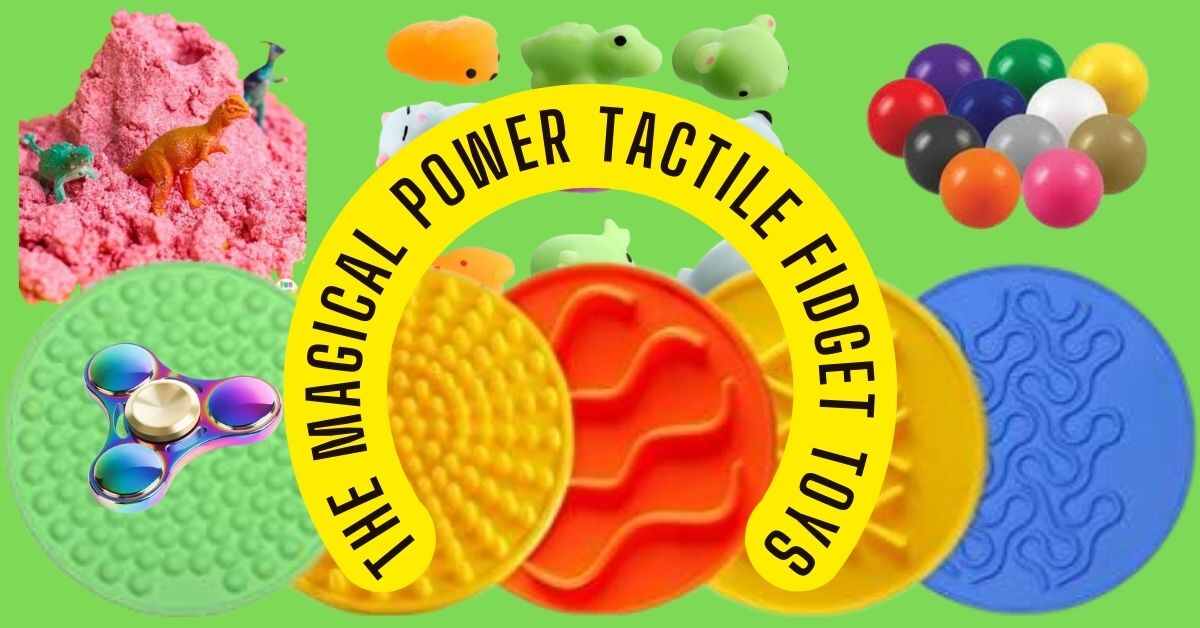Introduction
Finding moments of rest and focus in today’s fast-paced environment can be difficult. Fidget gadgets come in very handy in this situation. These little, tactile devices have grown in popularity due to their capacity to relieve tension and boost attention.
In this creative article, we’ll look at how to make fidget toys at home, allowing you to customize your own stress-relieving gadgets.
Table of Contents
The Popularity of Fidget Toys
• Fidget toys have piqued the interest of individuals of all ages. These toys have become indispensable friends in daily life, from students seeking focus during study sessions to professionals in need of a mental break.

Benefits of Homemade Fidget Toys
- Crafting your own fidget toys provides a unique opportunity to tailor them to your preferences. You have the freedom to choose textures, colors, and shapes that resonate with you, enhancing their effectiveness in providing stress relief.
What are Some Benefits of Fidget Toys?
- Fidget toys are self-regulation tools that can help increase attention and focus, relieve anxiety, and provide a calming effect during pre-surgery anxiety.
What are Some Benefits of Fidget Toys for Adults?
- Fidget toys provide a variety of advantages for adults, including stress reduction, increased attention and concentration, improved cognitive function, and mindfulness.
- They relieve nervous energy and improve attention and production.
- Fidget toys can also help with awareness and relaxation, which is especially good for those with ADHD.
- They also relieve boredom, prevent nail biting and other bad habits, and stimulate the senses.
- They are especially effective for people who have sensory processing issues.
- Fidget toys can also assist people with anxiety and autism in managing their emotions by giving comfort and regulation.
What are Some Benefits of Fidget Toys for Children?
- They can provide a range of benefits for children, including improved focus, stress reduction, sensory stimulation, fine motor skill development, self-soothing capabilities, enhanced learning opportunities, social and emotional development, and behavior management support.
- Fidget toys can be a tiny diversion from which children can gain significant advantages, such as being calm, which can lead to greater concentration and focus, enhancing learning and productivity.

Where to Find Materials for DIY Fidget Toys?
Before you embark on your fidget toy crafting journey, it’s important to gather the necessary materials. Materials for DIY fidget toys may be found in a variety of sources, both online and in physical stores. Here are several possibilities:
- Craft Stores: Stores such as Michaels, Jo-Ann Fabrics, and Hobby Lobby frequently provide a broad range of crafts supplies, such as beads, threads, and other components that may be used to build fidget toys.
- Marketplaces on the Internet: Amazon provides a large assortment of crafting supplies. Everything from beads and ribbons to unusual materials for fidget toys may be found.
- Etsy: Etsy is a marketplace where many independent craftspeople offer their handcrafted or one-of-a-kind materials suitable for fidget toys.
- Fidget Toy Specialty businesses: Some internet businesses specialize in fidget toys and may also sell the ingredients required to build them. Fidgetland, FidgetHQ, and other similar sites are examples.
- Wholesale or Bulk Retailers: If you intend to construct a big number of fidget toys, consider purchasing supplies in bulk. Alibaba, AliExpress, and even Amazon’s bulk categories might be cost-effective solutions.
- Hardware Stores: Depending on the type of fidget toy you’re making, you might find materials like nuts, bolts, or other hardware components that can be repurposed.
- Recycling Centers or Scrap Yards: If you’re interested in upcycling materials for your fidget toys, these places can be treasure troves for unique components.
- Online Marketplaces for Used Items:
- Facebook Marketplace: This network allows users to sell used products locally, and crafting ingredients may be offered
- eBay: You may be able to discover used crafting supplies or even pre-made fidget toys at a lesser cost.
What Exactly are Fidget Toys?
- Fidget toys are tiny, portable objects or gadgets that provide sensory stimulation and assist people in focusing or alleviating excess energy, particularly those with attention difficulties, anxiety, or autism.
- They are intended to be handled or engaged with in some way, allowing the user to engage their senses in a non-intrusive way.

Why Fidget Toys are Beneficial?
Fidget toys offer a range of benefits for individuals, both children and adults, across various contexts. Here are some of the reasons why they are thought to be beneficial:
1. Improved Focus and Concentration: For many individuals, having something to fidget with can actually enhance their ability to concentrate on tasks.
2. Stress and Anxiety Relief: Manipulating a fidget toy can serve as a form of stress relief or anxiety management. The repetitive motions can have a calming effect and help individuals cope with stressful situations.
3. Enhanced Cognitive Performance: Some studies suggest that engaging with a fidget toy may improve cognitive functions, such as memory and problem-solving skills.
4. Regulation of Energy Levels: Fidget toys can be particularly useful for individuals who have excess energy or a tendency to fidget naturally. They provide an outlet for this energy in a non-disruptive way.
5. Aiding in Relaxation and Mindfulness: Using a fidget toy can serve as a mindfulness tool, helping individuals stay present in the moment.
6. Support for Sensory Processing Needs: People with sensory processing disorders, including those on the autism spectrum, often benefit from sensory input. Fidget toys can provide a controlled and socially acceptable way to meet these sensory needs.
7. Occupational Therapy Tool: Occupational therapists often use fidget toys as a part of therapy sessions to help individuals develop fine motor skills, improve coordination
8. Versatility and Customization: Fidget toys come in a wide variety of forms and textures, allowing individuals to choose what works best for their specific needs and preferences.
Types of Fidget Toys
There are numerous types of fidget toys designed to cater to different sensory preferences and needs. Here are some common types:
- Fidget Spinners: These have a central bearing and lobes that allow them to spin. Each side offers a different tactile experience.
- Squishy Toys: These are soft, squeezable toys that provide a tactile sensation. They can be in various shapes, such as animals or food items. They’re great for fine motor skills.
- Fidget Cubes: These are small cubes with various features like buttons, switches, and dials. Each side offers a different tactile experience.
- Tangle Toys: These are flexible and interconnected pieces that can be twisted, bent, and shaped. They’re great for fine motor skills.
- Stress Balls: These are usually made of a soft, squeezable material like foam or gel. They’re designed for squeezing to relieve stress and tension.
- Fidget Rings: These are rings with moving or textured elements. They’re worn on fingers and provide a discreet fidgeting option.
- Kaleidoscope Toys: These provide visual stimulation through the changing patterns and colors they produce.
- Sand and Sensory Toys: These are often used in therapy and can involve manipulating sand or other textured materials.
- Fidget Pens or Pencils: These writing instruments have additional features like spinners, sliders, or clickers to engage fidgeting.
- Marble Mazes or Fidget Pads: These are handheld devices with tracks and marbles that can be maneuvered for tactile stimulation.
- Beaded Bracelets or Necklaces: These are made of beads that can be manipulated for sensory input. They can be discreet wearable fidgets.
- Sensory Chew Toys: These are designed for individuals who benefit from oral sensory input.
- Squeeze Toys: These can take various forms, like stress-relief toys shaped like animals or objects, providing a tactile experience when squeezed.
- Velcro Strips: These are strips with hook and loop fasteners that can be pulled apart and reattached for sensory feedback.
- Fidget Dice: Similar to fidget cubes, these are small dice with different fidgeting elements on each face. Here is a video tutorial to make this toy
How to Make Fidget Toys at Home?
Here are some easy and inexpensive DIY fidget toys that you can make with household items:
- Zipper Bracelet: This DIY fidget toy may be used to create a fashion statement. It’s simple to create and just takes a few items like nylon zippers and pliers. Here is a video tutorial for Zipper Bracelet making at home
- Fidget Sticks: Wood craft sticks, plastic beads, and pipe cleaners are used to make these DIY fidget toys. Here is a video tutorial to make Fidget Sticks.
- Bead Snakes: This homemade fidget toy is created with multicolored pony beads and nylon rope. Here is a video tutorial to make these toys.
- Fidget Putty: This homemade fidget toy combines the pleasure of slime with the calming aspect of fidgets. Here is a video tutorial to make this toy.
- Chain of Paper Clips: To construct a DIY fidget toy, make a chain of paper clips. It’s simple to construct and just takes a few supplies like paper clips and pliers. Here is a video tutorial to make this toy.
- Tangle Toy: Rubber bands and paper clips are used to make this DIY fidget toy. Here is a video tutorial to make this toy.
- Squishy Ball: This DIY fidget toy is made using balloons and flour. Here is a video tutorial to make this toy.
- Spinner: This DIY fidget toy is made using paper clips and a binder clip. You can find here the tutorial
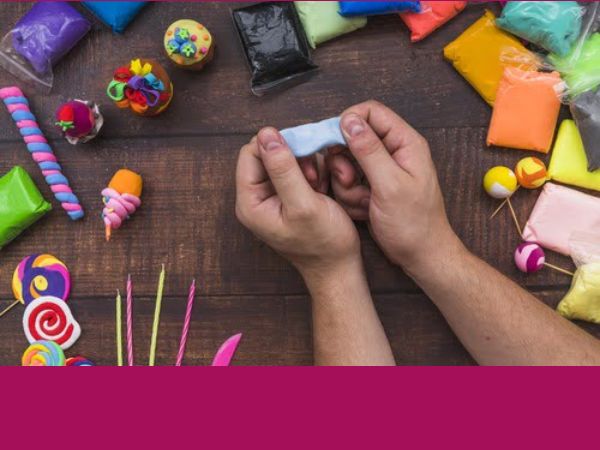
How can I Make a DIY Stress Ball?
Here are some easy and inexpensive DIY stress ball ideas that you can make with household items:
- Flour-filled Balloon: This is a simple and classic DIY stress ball that requires only a balloon and flour. Fill the balloon with flour, tie it off, and you’re done!
- Orbeez Stress Ball: This DIY stress ball is made using Orbeez, a water-absorbing polymer. You can find the tutorial.
- Fabric Stress Ball: This DIY stress ball is made using fabric and flour. You can find the tutorial.
- Stress Ball without a Balloon: This DIY stress ball is made using glue, shaving cream, cotton balls, contact solution, and paint. You can find the tutorial.
- Stress Ball with Essential Oils: This DIY stress ball is made using flour, a balloon, essential oils, and a measuring cup. You can find the tutorial.
How can We Make Fidget Spinners at Home?
Making your own basic fidget spinner may be a fun DIY project. Here’s a basic method using common materials:
Materials Needed:
- Bearing: You’ll need a ball bearing, which is the central component that allows the spinner to rotate. You can often find these in skateboards or in old fidget spinners.
- Cardboard or Plastic: This will be used to create the body of the spinner.
- Adhesive (Glue): To attach the pieces together.
- Small Weights (Optional): You can add weights to the ends of the spinner arms for more momentum.
Steps:
- Prepare the Bearing:
- If you’re using a skateboard bearing or one from an old spinner, properly clean it.
- Lubricate the bearing as needed for smoother rotation. A modest amount of oil can be used.
- Create the Spinner Body:
- Make a round piece of cardboard or plastic that is slightly bigger than the outside diameter of the bearing. This will be the spinner’s primary body.
- Create the Arms:
- Cut three smaller pieces of cardboard or plastic to serve as the arms. These should be of equal size and shape, like a propeller.
- Attach the Bearing:
- Apply glue to the center hole of the circular body and press the bearing into it. Make sure it’s centered and secure.
- Attach the Arms:
• Glue the arms to the circular body’s exterior borders, equally spaced around the bearing. They should be arranged in a balanced triangle.
- Add Weights (Optional):
- If you want to add weights, you can attach small objects (like coins or washers) to the ends of the arms. This can increase the spinner’s momentum.
- Allow the Glue to Dry:
- Let the glue dry completely to ensure everything is securely in place.
- Test the Spinner:
- Give it a spin! If it’s not spinning smoothly, make adjustments as needed.
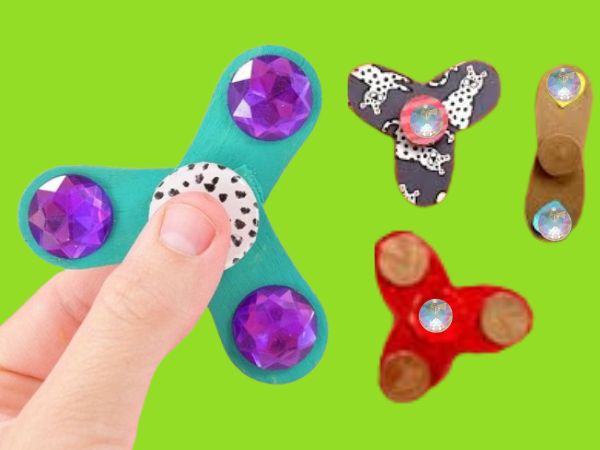
How are Infinity Cubes Made?
An infinity cube is a mesmerizing fidget toy that seems to go on forever in all directions. It’s made up of multiple smaller cubes connected in a way that allows them to fold and unfold continuously. Here’s a step-by-step guide on how to make one:
Materials Needed:
- Cube Modules: You’ll need at least 8 smaller cubes of equal size. These can be made from wood, plastic, or even folded from paper.
- Hinges: Each cube will need hinges to connect them. You can use small metal hinges, but flexible materials like duct tape or strong adhesive can also work.
- Super Glue or Adhesive: This is necessary if you’re using materials like wood or plastic for the cubes.
Steps:
- Prepare the Cube Modules:
If you’re making cubes from wood or plastic:
- Cut out 48 squares (6 for each cube).
- Assemble them into cubes using glue or adhesive.
- Ensure each cube is uniform in size.
If you’re using paper:
- Cut out 8 squares (1 for each cube).
- Fold them into cubes.
- Attach Hinges:
- For each cube, attach hinges on opposite sides. This will allow them to fold and unfold.
- If you’re using tape, make sure it’s secure but not too tight, to allow movement.
- Connect the Cubes:
- Take two cubes and connect them by attaching the hinges. Repeat until you have a chain of 4 cubes.
- From the Infinity Shape:
- Take two chains of cubes and connect them at the ends, creating an “L” shape.
- Connect the free ends of the L-shape with the remaining two cubes. Now, you have an infinity cube!
- Strengthen the Joints:
- If you’ve used tape, reinforce the hinges with additional layers for stability.
- If you’ve used glue, ensure it’s dried and set properly.
- Test and Adjust:
- Gently fold and unfold the cube to see how it moves. If any hinges are too tight, adjust them for smoother movement.

- Optional: Decorate:
- You can paint or decorate the cubes to your liking. Add colors, patterns, or designs for a personal touch.
Remember, making an infinity cube may take some practice to get it just right. Be patient and adjust as needed. Once finished, you’ll have a fascinating toy that provides endless entertainment!
How Do You Make a Homemade Fidget Toy Pop?
Create your own homemade fidget toy that’s not only fun but also provides a satisfying popping sensation. This DIY pop fidget toy is easy to make and can provide hours of entertainment and stress relief. Here’s what you’ll need and how to make it.
How Do You Make a Fidget Cube at Home?
What Do You Need to Make a Lego Infinity Cube?
A Lego infinite cube is a fascinating toy that is made up of linked Lego cubes. With its continuous motion and limitless design possibilities, it folds and unfolds indefinitely, producing a stunning visual illusion.
Here’s a step-by-step guide on how to make one.
How to Make a Marvel Maze with Lego?
A Marvel labyrinth using Lego blends the thrill of Marvel characters with the inventiveness of Lego to create a dynamic, interactive maze filled with famous superheroes and intriguing obstacles.
Here’s a step-by-step guide on how to make one.
How Do You Make a Lego Fidget Spinner Easy?
A Lego fidget spinner is a portable toy built of Lego bricks that may be customized. It has a spinning motor for tactile stimulation, giving you a creative and useful outlet for fidgeting and relaxing.
Here’s a step-by-step guide on how to make one.
How Do You Make a Water Snake Fidget?
A water snake fidget, also known as a liquid motion timer, is a sensory device made out of brightly colored liquid and small floating items. It gives a relaxing visual and tactile experience for stress alleviation and relaxation.
Here’s a step-by-step guide on how to make one.
How Do You Make a Busy Cube?
A busy cube is a multi-activity sensory item that is intended to engage and stimulate humans, most notably youngsters. It includes interactive components like buttons, switches, textures, and moveable pieces to enhance sensory exploration and the development of fine motor skills.
Here’s a step-by-step guide on how to make one.
How Do You Make a Balloon Fidget Toy?

A balloon fidget toy is a stress-relieving gadget that may be constructed at home by filling a balloon with a soft material such as grains or beans. Squeezing or stroking it delivers a pleasurable sensory experience that aids in relaxing.
Here’s a step-by-step guide on how to make one.
How Do You Make Glitter Stress Balls?
Glitter stress balls are therapeutic toys that feature glitter and are filled with a malleable substance such as gel or foam. Squeezing them has tactile and relaxing properties that assist in stress alleviation and relaxation.
Here’s a step-by-step guide on how to make one.
How Do You Make a Unicorn Stress Ball?
A unicorn stress ball is a tiny, squeezable unicorn-shaped toy. It’s comprised of malleable material, such as foam or rubber, and provides a pleasant and tactile approach to releasing stress and anxiety.
Here’s a step-by-step guide on how to make one.
Can You Suggest More Complex Fidget Toy Tutorials?
Here are some advanced DIY fidget toy tutorials that you can try:
- Fidget Spinner Tricks: This video tutorial by Mathias Moslund teaches you 5 advanced spinner tricks 1.
- Extra Large Fidget Toy: This is a free crochet pattern and video tutorial by Hooked for Life Publishing. The fun mobius construction of this toy allows you to pull the ruffle through the center — over and over and over 2.
- DIY Neon and Wood Floating Bead Bracelet: This tutorial on DIY neon and wood floating bead bracelets is simple and colorful and a fun way to accessorize yourself 3.
- Infinity Rose Fidget Toy: This tutorial by Lisa Ellis teaches you how to make a fun fidget toy 4.
Personalizing Your Fidget Toys
- Painting and Decorating
- Adding Textures
- Incorporating Aromas
Safety Considerations
- Child Safety Guidelines
- Choosing Safe Materials
- Avoiding Choking Hazards
Benefits Beyond Stress Relief
- Educational Aspects
- Therapeutic Value
- Sensory Development
Incorporating Fidget Toys in Daily Life
- Work and Productivity
- Classroom Environments
- Stressful Situations
Conclusion
Making your own fidget toys allows you a more customized approach to stress alleviation. By following these precise directions, you will not only construct one-of-a-kind instruments, but you will also benefit from the therapeutic advantages they provide.
- The Joys of Crafting Fidget Toys
- Personalized Stress Relief at Your Fingertips
FAQs
1. What age groups can benefit from using fidget toys?
Fidget toys can be beneficial for people of all ages, including children, adults, and the elderly.
2. Can fidget toys be used in a professional work setting?
They certainly can. Indeed, fidget toys are becoming increasingly popular in the workplace due to their ability to help employees focus and concentrate.
3. Are there alternative materials for those with allergies?
Yes, there are a range of hypoallergenic fidget toys on the market. Silicone, plastic, and metal are a few examples.
4. How long does it typically take to make a fidget toy?
The time required to create a fidget toy varies according to the type of toy and the intricacy of the design.


